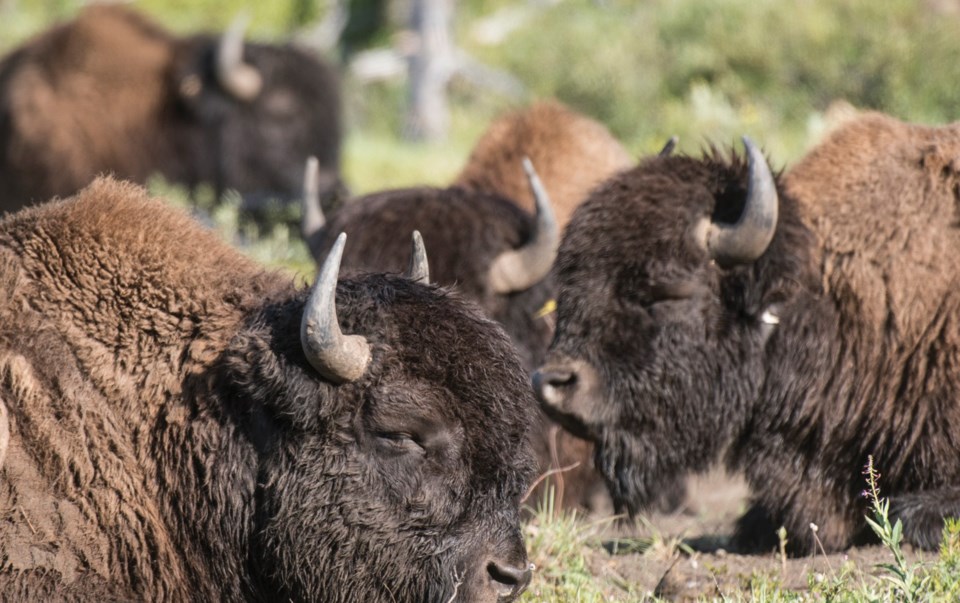BANFF – It’s been one year since the plains bison were reintroduced into the wilds of Banff National Park and they are reaching new heights.
While observing the behavioural patterns of the bison, Karsten Heuer, bison reintroduction project manager for Banff National Park, noticed something unexpected over the last year.
“When we first released them last summer, we were pretty surprised and blown away by how high they were going – like right onto ridge tops," Heuer said. "[They are] spending a good portion of the summer up in the alpine and we were really wondering at that time if they were just a little bit kind of confused and anxious, having just been released and this was all new to them."
While it surprised Heuer at first, he realized the bison herd was making its way up the alpine ridges to eat the most nutritious forage available to them on the landscape.
“That’s essentially what these guys are doing," he said. "It’s leading them up into places where you kind of normally look for goats and sheep, not bison."
Heuer added that although there was archaeological evidence of the bison roaming at higher elevations more than 150 years ago, it is still astounding for him to witness.
“I guess it really shouldn’t come as a surprise, but I definitely see myself doing second takes about some of the places that they’re spending their time,” Heuer said.
As it stands now the reintroduced plains bison herd consists of 36 animals, including 10 of the original cows, four mature bulls, 12 calves and another 10 yearlings.
Parks translocated plains bison from Elk Island National Park in northern Alberta to the Panther Valley in 2017, but contained them inside a penned area for the first season. Then last year, the herd was given free reign in national park's 1,200 square kilomtre reintroduction area.
The bison’s reintroduction is still at its early stages and while it may be decades down the road until researchers see the full ecological effects of the bison on the landscape, Heuer is already observing changes in their habitat.
“Even with just a few dozen bison and this one year having passed, we are seeing some noticeable changes out there … they are obviously grazing some of their favourite meadows more than they’ve been grazed in many, many decades and we’re seeing bison patties throughout that landscape where we’ve never seen them before, so they’re recycling nutrients,” Heuer said.
In its lifetime, the herd's natural activities such as grazing and wallowing is expected to revitalize the landscape. As the bison condition their skin to the mud and dirt, they are creating barren ground that leads to water ecosystems and theoretically to new amphibians.
Heuer added that plains bison hair can be used by other animals like songbirds as insulation for nests. When a bison passes away, that will also contribute to the whole ecosystem.
“The animals are between 1,000 and 2,000 pounds, depending on the sex and we [have not had] one die and that’s going to happen sooner or later and that’s going to be a huge boom of energy and protein for the whole community of scavengers and predators as well,” Heuer said.
Throughout the bison reintroduction project, Heuer emphasized the importance of conservation. While reintroducing a species is possible, conservation should be considered first as an enormous amount of effort, time and money is involved with reintroduction.
“But it is avoidable for other species if we can actually keep those species [from extirpation or extinction]," he said. "It really has for me personally shown the tremendous value in us having the foresight to keep what we already have on the landscape."





